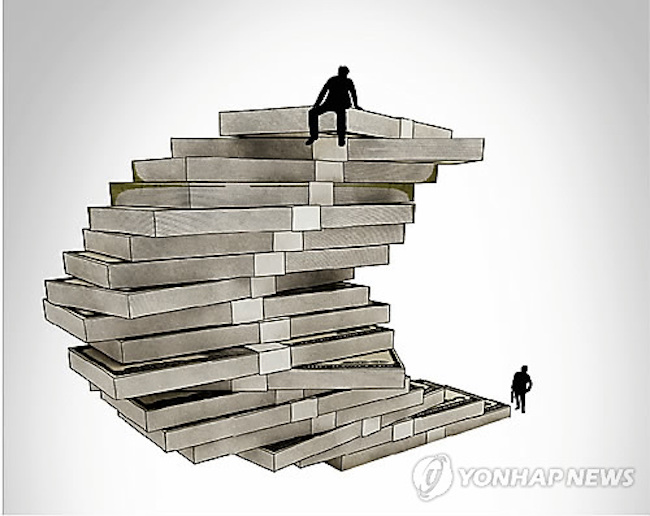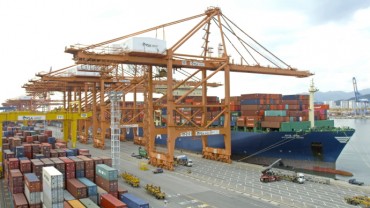- (Image: Yonhap)
SEOUL, Sept. 12 (Korea Bizwire) – The wage gap between university graduates and high school graduates in South Korea has widened, surpassing the OECD average.
The country’s dwindling birth rate is mirrored in the reduced student-to-teacher ratio, but it is still above the OECD average.
The Ministry of Education (MOE) and Korean Educational Development Institute (KEDI) unveiled their analysis of the “OECD Education Index 2018” through a press release on September 11.
With the wage of a worker with high school diploma set at 100, the salary of a worker with a technical college diploma was 116, rising to 149 for one with a bachelor’s degree and 198 for one with the master’s or higher – in 2016.
The numbers were 115, 145 and 189 in 2015.
The wage gap was larger than the OECD average for the first time since the model was developed in 2015.
Korea’s employment rate for adults stayed at 74 percent in 2017, similar to the previous year, but a bit lower than the OECD average of 76 percent. The employment rate for high school graduates was 73 percent, technical college graduates 77 percent and university graduates or higher 78 percent – all lower than the OECD average.
Among the individuals whose parents had high school education or lower, 27 percent completed higher education, towering above the OECD average of 21 percent. Apparently, Korean parents are still zealous for their children’s education.
Among Korean adults, 48 percent had completed higher education, topping the OECD average of 38 percent. When narrowed down to young adults (25 to 34), the proportion surged to 70 percent, leading the OECD.
Meanwhile, class sizes are shrinking.
The student-to-teacher ratio in 2016 was 16.5 for elementary schools, 14.7 for middle schools and 13.8 for high schools. It was 16.8, 15.7 and 14.1 in 2015.
The numbers are approaching the OECD average of 15.0, 12,7 and 13.0, but still lingering slightly above.
There were 23.2 students per class at the elementary level, and 28.4 at middle school – again higher than the average of 21.3 and 22.9 in OECD countries.
Entry-level teachers in South Korea were not paid as much as their counterparts in the OECD, whereas veteran teachers were paid more.
The annual salary of a new public school teacher was $30,395 for elementary school, $30,455 for middle school and $29,738 for high school.
After 15 years of service, average salaries rose to $53,405 for elementary school, $53,465 for middle school and $52,747 for high school.
Joey Yoo (joeyyoo@koreabizwire.com)







